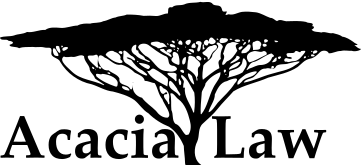Copyright
Copyright is the right to prevent others from copying and modifying what the law calls a “copyright work”.
There are certain types of “copyright works” listed in the Copyright Act. Only these types of works attract copyright.
Examples of copyright works are written works (e.g. books, blogs, worksheets), photographs, drawings and the code that makes up computer software.
Copyright comes into being automatically when a new copyright work is created. As well as being on the list of copyright works, the work must also be “novel” and not itself a copy or modification of any prior work.
Every business creates copyright works during the day-to-day running of the business.
Every business should have a copyright policy to ensure that its staff and contractors do not infringe the copyright of others, which could lead your business into hot water.
Every business should also ensure that all employment and contractor agreements deal with the issue of copyright and ensure that copyright in new works created on behalf of your business, remains with your business. These agreements should be in writing.
Also, you are generally not allowed to copy or modify other people’s materials without a license so be aware of the license that you get when using anything that might be copyrighted, such as images, videos, software libraries, applications, passages and quotes.
Be careful if you have someone do development work for you. For example, if a web designer designs a website for you, ensure that they give you copies of written license agreements for any images they have used on your site. I have had many clients accused of infringing copyright in images used on their sites by developers. Also, if you are a developer, ensure that you have the proper licenses in writing for any images you use on clients’ apps or sites.
Copyright and the Internet
- MYTH = if it is on the internet, I am allowed to copy it.
- Material on the internet is protected by copyright like any other material (it is just easier to copy or download!).
- Copying onto your hard-drive, downloading, printing, copying to disc, emailing a copy, cutting and pasting, modifying are all prohibited activities, unless you have the permission of the copyright owner.
- EXCEPTION – you can make copies of material which a web site authorises you to copy or material that is no longer under copyright protection.
- NOTE: Copyright protection can last for differing lengths of time depending on the type of work and the country you are seeking to enforce it in.
Social Media
Given the ethos of social media as a platform for sharing ideas, business owners and employees need to be alert to inadvertent copyright infringement issues.
Just as you would not copy material generated by others in a physical book, it is important to remember that copying digital information without consent may well amount to copyright infringement.
Common examples of potential copyright infringement traps to avoid are the copying of images online, copying of material such as the contents of blogs or social media posts that you have seen elsewhere. To avoid copyright infringement, it is often best to share a link to an existing blog or share a social media post.
Even in our own business, we have had situations where the material that we have generated online, has been copied and posted as the material of someone else.
We have also come across the situation where people find memes online, add their branding or business name to it, and then repost it as their own. This amounts to copyright infringement unless they have a license to use that particular image in that way.
It also appears that there is a common misconception that material which is sourced online, but the author of which is difficult to determine, is not under copyright protection. I have even come across people posting online that such material is known as “orphan copyright material” and in the case of computer programs “abandonware” and is freely available for anyone to use. This is a myth and is not correct under Australian law. Any time someone creates new written, audio, graphic, computer program, etc. material they automatically own the copyright in such material. This applies whether or not they state that they are claiming copyright in such material.
Unauthorised copying of such material will amount to copyright infringement.
If your employees or consultants engage in copyright infringement while working for you, your business could be sued for copyright infringement because the infringement was done by or on behalf of your business.
Another example which is becoming increasingly common is where a web designer or graphic designer designs either a website or marketing material incorporating graphics which they have sourced online. The business owner believes that the graphics have been used with the proper permissions, but years later receives a letter of demand from the copyright owner of the graphics, and the business owners have no written license agreement to prove that they were entitled to use those graphics.
Do not assume that contractors, such as website designers, have copyright licenses for images / text they use on your behalf. Many small businesses assume that images placed on their website by their website designer has the proper license. Make sure you obtain and keep a copy of the license and renew it, if necessary.
To avoid copyright infringement litigation, the business owner must prove that such a license exists and that the use of such material falls within the terms of the license. On a practical level, this means that all licenses should be kept for material which has been sourced from outside of the business. Alternatively, businesses should create their own material.
This summary relating to copyright is expanded on another mini-book (please email cathryn@acacialaw.com for a copy of the “Lawyer In Your Pocket” copyright mini-book).



